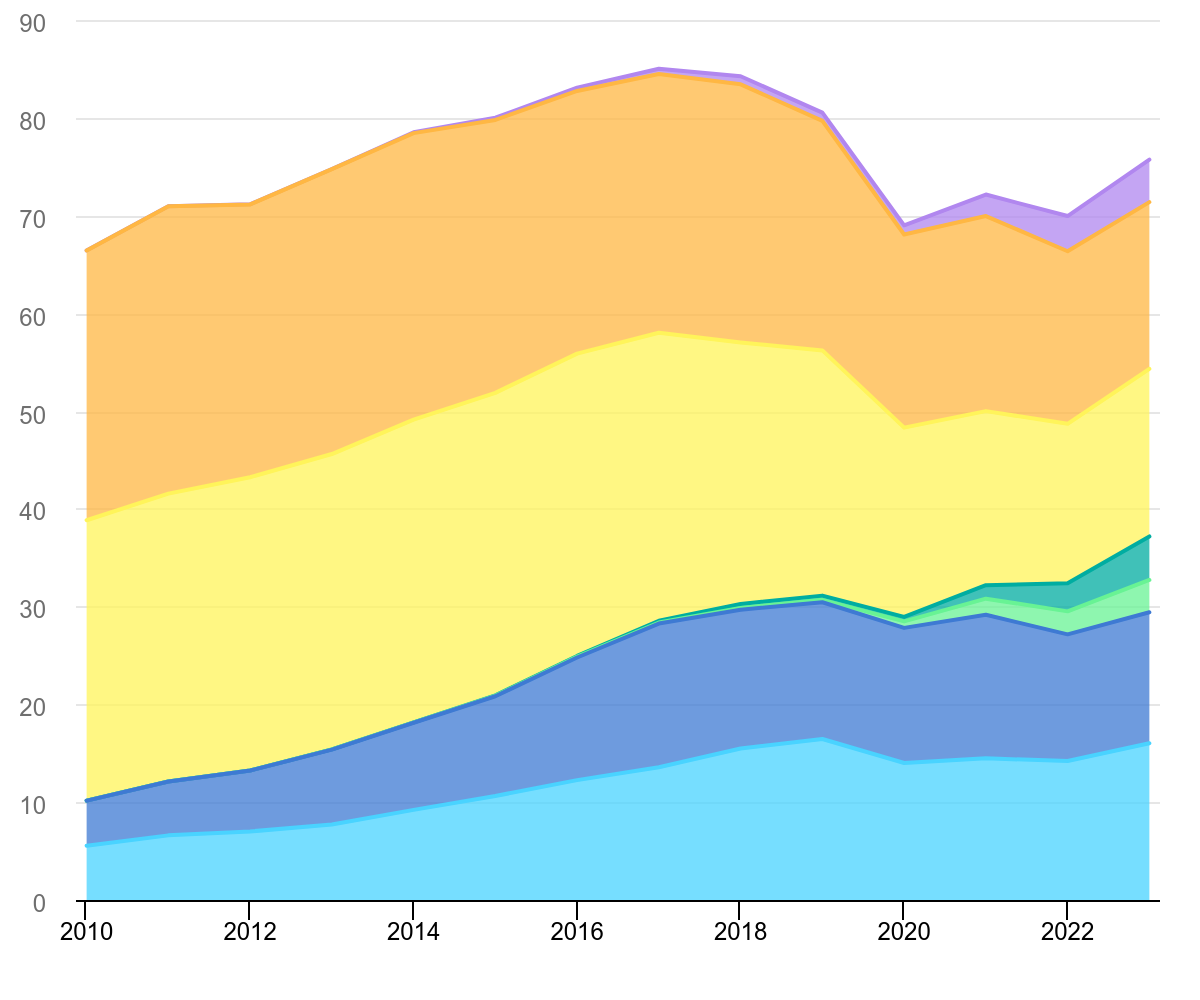In a world dealing with climate change and environmental challenges, an unsettling paradox has emerged. The global demand for SUVs (Sport Utility Vehicles) has reached unprecedented heights, despite concerns over their environmental impact. SUVs accounted for 48% of all cars sold globally in 2023, setting a new record and reflecting a trend that undermines efforts to mitigate climate change.
360 Million SUVs Globally 2023
The International Energy Agency’s (IEA) recent analysis reveals that more than 360 million SUVs will be on the roads worldwide by the end of 2023. This highlights the growing popularity of these vehicles, perceived as status symbols and as more comfortable alternatives to traditional cars.
The allure of SUVs has transcended borders, with both developed and developing nations driving rising. In developed countries, SUV sales reached 20 million units last year, capturing over 50% of the car market for the first time. Developing economies are not far behind, experiencing a rapid surge in SUV popularity.
The stats show: 1 in 4 cars on the road today is an SUV, with the vast majority (95%) relying on gasoline or diesel. Electric SUVs are gaining traction, accounting for over 55% of all electric vehicle registrations in 2023, but still represent a small fraction of the SUV market.

SUVs emit about 20% more carbon dioxide than regular cars, a significant contributor to the growing emissions crisis. Their increased size and weight – typically 200 to 300 kg heavier than a mid-sized car – and larger footprint, occupying an additional 0.3 square meters of space, exacerbate the problem.
The implications extend beyond emissions alone. SUVs require more parking space, up to 10% more than a standard mid-sized car, straining already limited urban infrastructure. Moreover, their elevated front ends pose a greater risk of injury to pedestrians, raising concerns about road safety.
The growing fascination with fuel-intensive vehicles leads to a higher demand for oil and electricity to power them, as well as an increased need for metals and minerals for their battery production. In 2022-2023, an additional 600,000 barrels of oil per day were consumed solely for SUVs – more than a quarter of the total annual increase in global oil demand, according to the IEA.
SUVs significant environmental impact
James Nix, from the think tank Transport & Environment (T&E), expressed concern over the trend. He stated, “Carmakers, in pursuit of higher margins, know only one direction: bigger and heavier. New cars are getting wider every year and are on track to become as wide as buses and trucks. Europe will go the way of North America unless lawmakers step in with EU width limits and national taxes and parking charges that discourage big SUVs.”
SUVs have a significant environmental impact. In 2023, these vehicles were responsible for emitting over 1 billion tons of carbon dioxide (CO2) globally, a 10% increase from the previous year. This alone accounted for 20% of the total increase in energy-related CO2 emissions, underscoring their impact on the climate crisis.
The analysis revealed that the annual increase in CO2 emissions due to the growing popularity of SUVs worldwide is equivalent to nearly half of the emissions from the global power sector. This is a startling comparison that highlights the urgent need for action.
The environmental toll goes beyond emissions. Their larger size and heavier construction require more materials to manufacture than smaller cars, straining resources and causing indirect emissions.
If the global fleet of SUVs were a country, it would rank as the fifth-largest emitter in the world, comparable to major economies like Japan.
Transport emissions surge despite pandemic
As global temperatures rise and extreme weather events disrupt lives, the urgency to curb rising emissions grows. However, the transport sector has rapidly increased emissions in recent years, overshadowing the dip during the COVID-19 pandemic.
The analysis highlights the concerning trend that in 2023, 30 million more gasoline and diesel-powered SUVs will be added to the global fleet, equivalent to the total number of electric cars on the roads. The electric vehicle market has expanded, with over 500 models available worldwide in 2023, 60% of which are SUVs.
Automakers are focusing on introducing electrified SUV models. This raises concerns about the demand for critical minerals needed for larger battery packs. The electric SUV market growth strains the supply chains for these materials will also increase.
Some countries and cities have taken steps to curb the demand posed by the SUV phenomenon. In recognition of these challenges, France, Norway, and Ireland have implemented or are exploring legislative frameworks to discourage the purchase and use of SUVs in urban areas. Cities like Paris and Lyon have introduced higher parking charges targeting SUVs to encourage sustainable transportation choices.
The shift from fossil-fueled cars to electric vehicles is crucial for global energy and climate goals, but experts stress the need for a multi-faceted approach. Optimizing EV battery pack sizes, tailoring fuel efficiency standards by vehicle size, and investing in innovative battery technologies with enhanced performance, durability, and lower material demand requirements.
The SUV paradox shows the interplay between consumer preferences, industry practices, and environmental consequences. Addressing the popularity of these larger, less efficient vehicles will need effort from policymakers, automakers, and consumers. The path forward needs to balance transportation needs and safeguarding the planet.
Follow Ground Report for Environmental News From India. Connect with us on Facebook, Twitter, Koo App, Instagram, Whatsapp and YouTube. Write us on GReport2018@gmail.com and subscribe our free newsletter.
Don’t forget to check out our climate glossary, it helps in learning difficult environmental terms in simple language.










